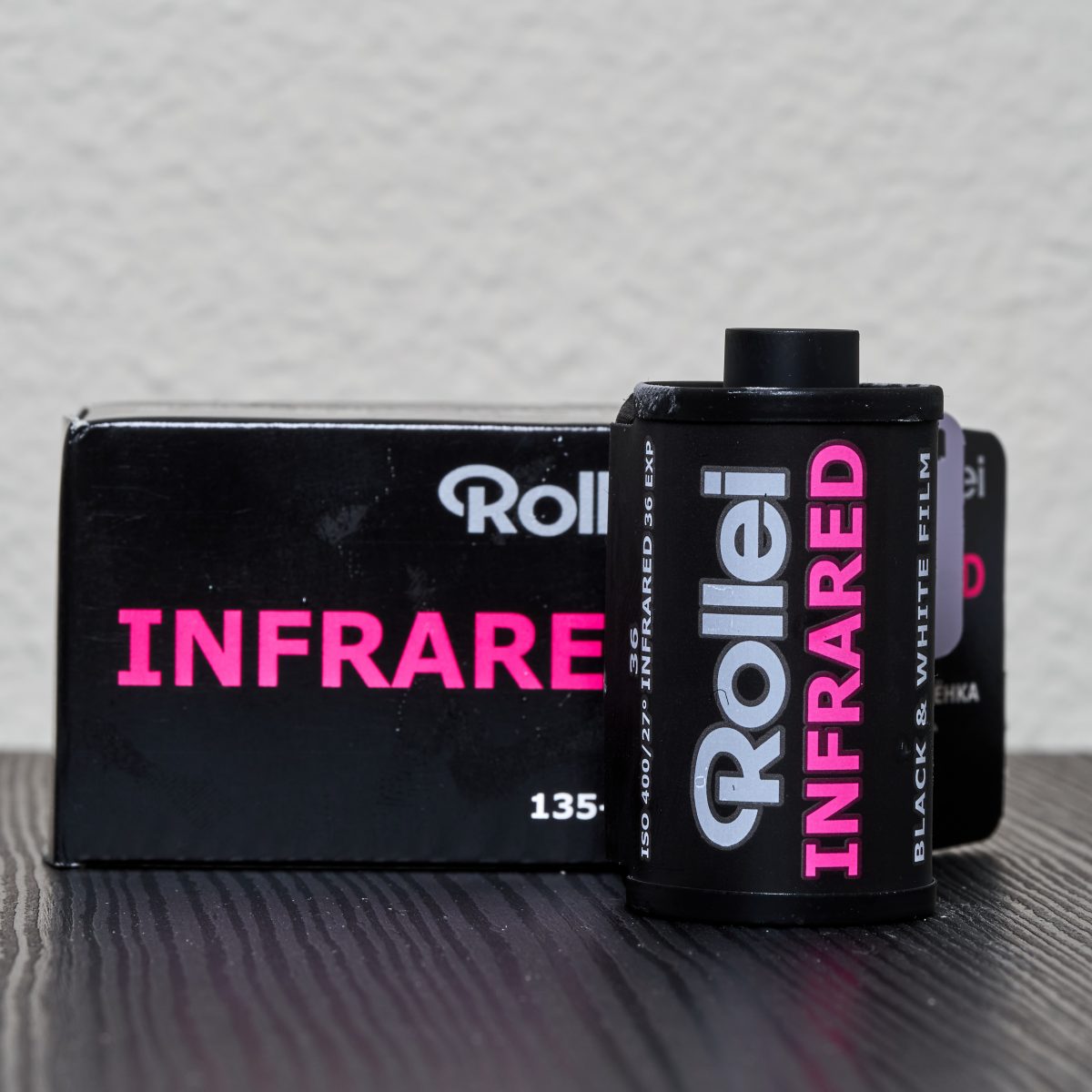
Infrared film is probably the first victim of the demise of the film industry in the 21st century. It was already a niche market, and all film manufacturers exited around the same time, around 2005. Not only did the beloved and unique Aerochrome disappeared, but so did true BW infrared film. The one saving grace is that there are still some fresh BW film able to capture near-IR spectrum, if you are using the right setup. Rollei Infrared film, as the name suggest, is one such film.
My default setup for infrared photography is using a normal-wide angle lens with a R72 (5 stop) filter. If you are shooting with a SLR, you will think you can’t see anything through the viewfinder; however, on extremely bright/sunny/peak IR days, you can actually see faint light through the viewfinder, that’s probably the best time to shoot IR. There are two ways to shoot IR, either compose/focus, put R72 filter one, and readjust focus (by moving it to the red line on your lens), or shoot it at F11 focus at infinity, thus everything is in focus. The real pain is actually the shutter speed. Rollei IR is 400 speed film, but with a ~5 stop filter, it will end up as ISO 12 – my point is, bring a tripod. Some more general IR photography tips, I have better luck shooting on bright days with lots of leaves (because leaves will reflect IR from the sunlight); there isn’t much IR in shade or under canopy; I hadn’t been able to overexpose (so going +1 over, on top of the +5 from filter, is good) but consistently underexposed, this might be due to light meter not picking up infrared; someone mentioned hot days are better, I have not tested, but IR is technically heat, so it does make some sense.
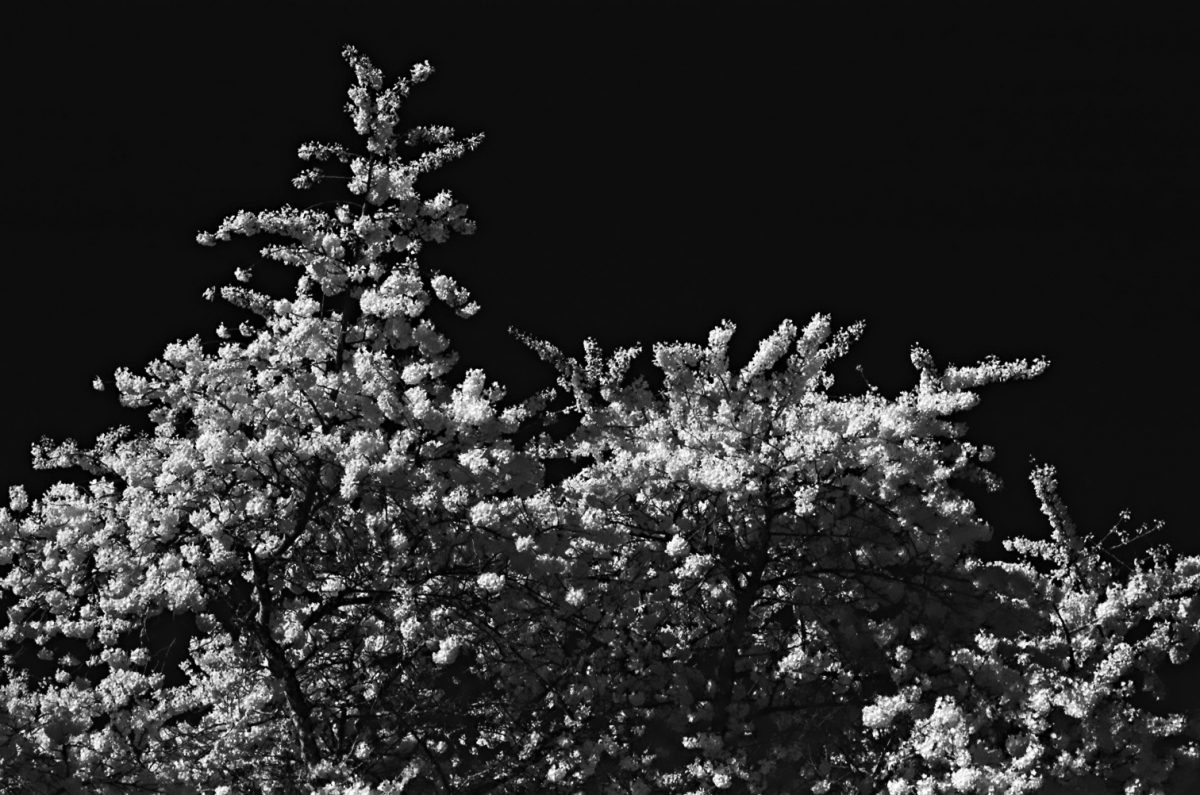
[Konica FT1 | Hexanon 57/1.4 | Rollei IR]

[Konica FT1 | Hexanon 57/1.4 | Rollei IR]
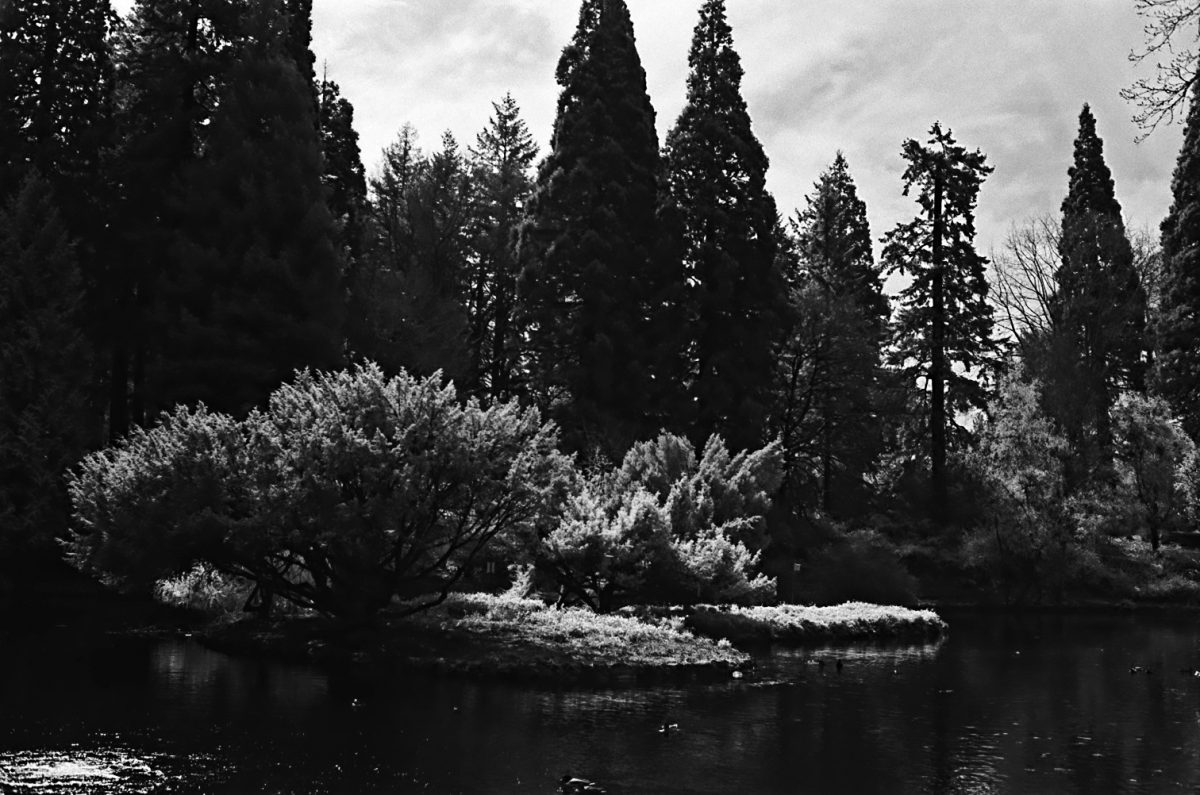
[Konica FT1 | Hexanon 35/2 | Rollei IR]
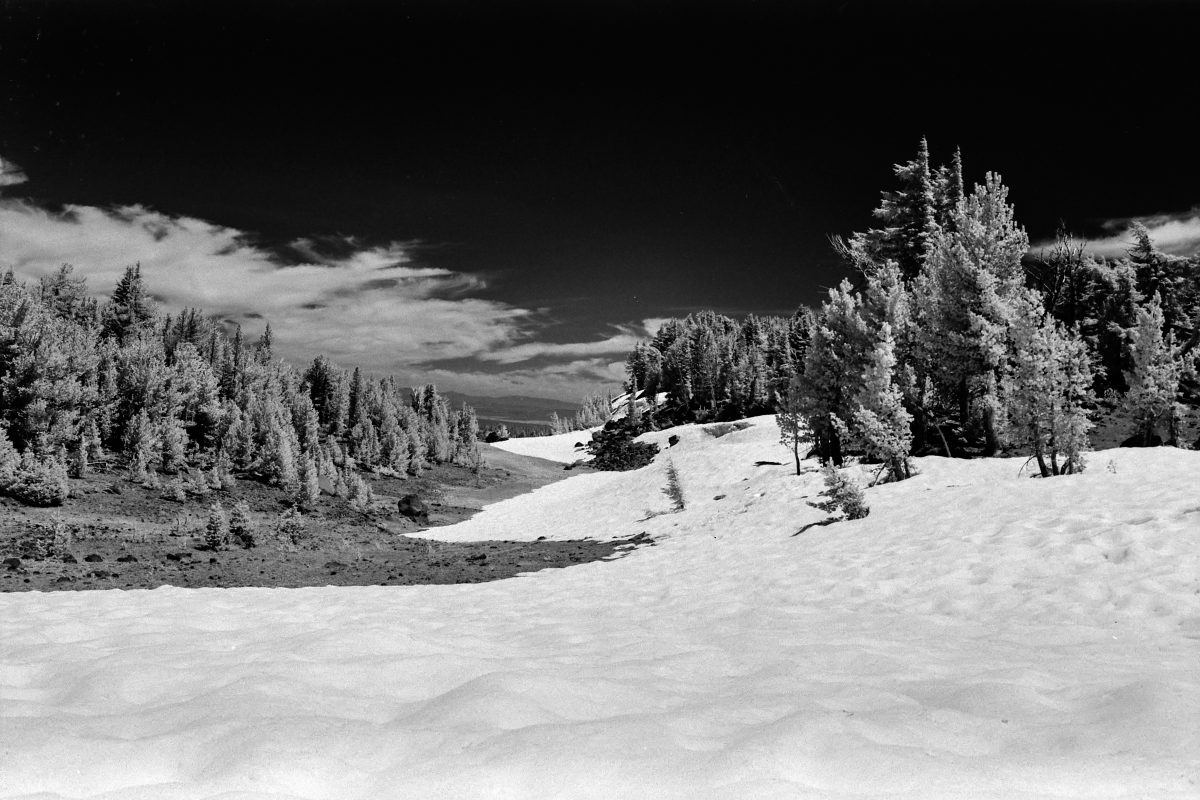
[Konica FT1 | Hexanon 35/2 | Rollei IR]
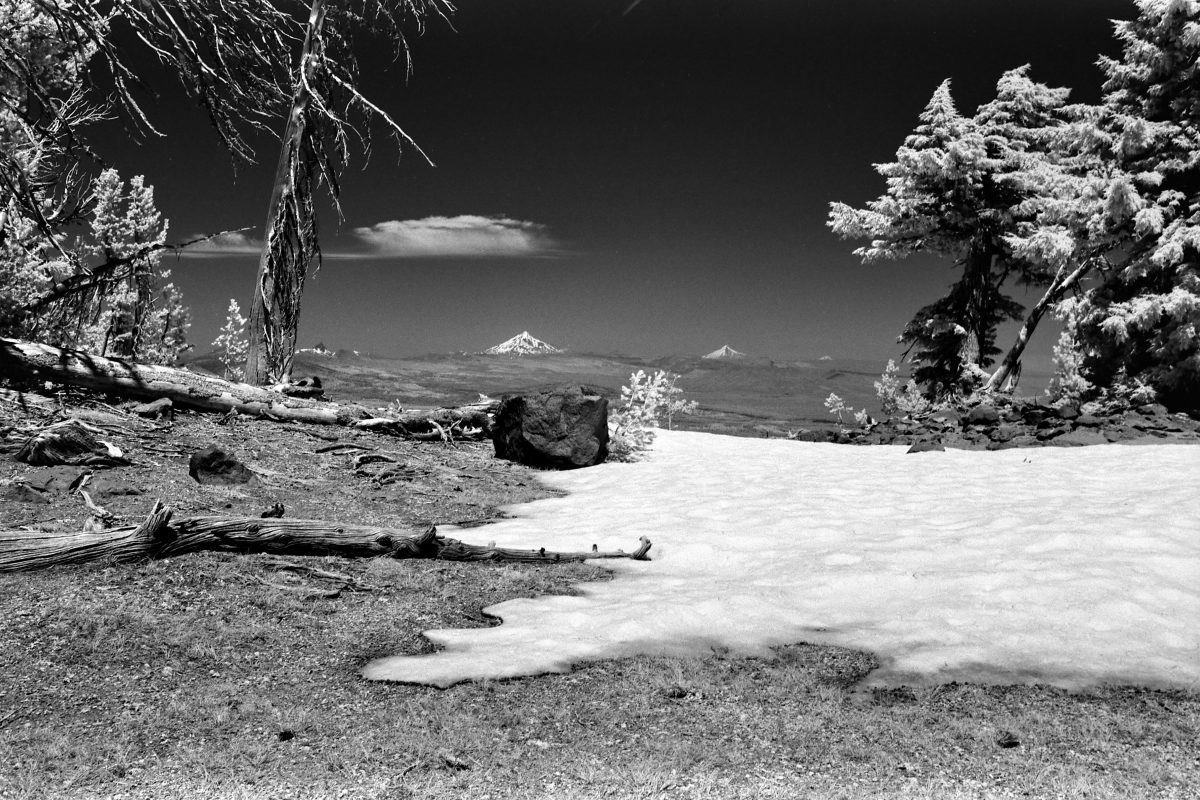
[Konica FT1 | Hexanon 35/2 | Rollei IR]
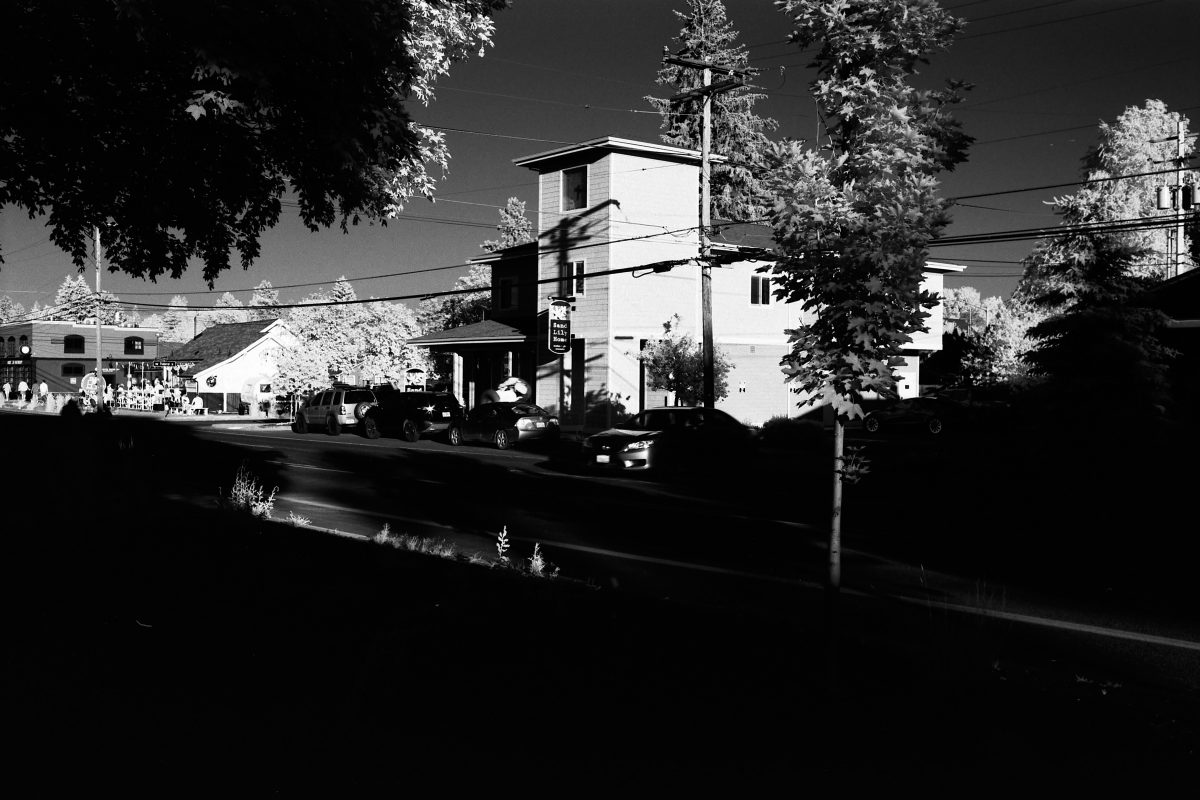
[Konica FT1 | Hexanon 35/2 | Rollei IR]
Rollei Infrared 400 Overview
Rollei/Agfa’s Infrared 400 is a unique infrared-sensitized panchromatic black and white negative film with a nominal sensitivity of ISO 400/27° without filtration. It is sensitive to IR wavelengths up to 820nm and can be used to produce unique halation effects with filtration and by varying the exposure length. It is suitable for working in both daylight and tungsten conditions and is characterized by a fine grain structure, notable sharpness, and high resolving power. Additionally, a good contrast profile offers clear separation between shadow and highlight regions. The film’s polyester base has been tested to an LE-500 (life expectancy 500 years) archival rating and also features anti-curling and anti-static coatings, as well as a special coating to promote smooth film transportation within the camera. Additionally, this clear base is particularly well-suited to scanning applications.
Film Base Polyester
Layer Thickness 100.0 µm
Resolution 160 lines/mm (At Contrast 1000:1)
Granularity RMS = 11
1 thought on “Rollei Infrared [35]”